Quick links to other Cyprus pages and/or sections Here
Northern Cyprus
The following three destinations on this webpage were visited during a day trip into Northern Cyprus. The division of the island into the Republic of Cyprus and the Turkish Republic of Northern Cyprus (separated by the “Green Line” buffer zone) was discussed in the introduction section of these webpages on Cyprus.
Varosha (shown below) is a haunting ghost town on the edge of the city of Famagusta and once Cyprus’s most glamorous beach resort before it was abruptly abandoned in 1974 during the Turkish invasion. Once frequented by celebrities like Elizabeth Taylor and Brigitte Bardot, the area was sealed off and left to decay, frozen in time behind barbed wire and military fences. In recent years, parts of Varosha have been reopened to visitors, offering a surreal glimpse into a once-thriving paradise once overtaken by silence and nature, but perhaps today, with the number of visitors now coming to take pictures, less of the eerie silence.


While some areas remain off-limits due to military restrictions, the (relatively small) reopened areas do offer a glimpse into the resort’s glamorous past. Frozen in time since 1974, sights to look out for include abandoned high-rise hotels like the once-famous Argo Hotel, empty cafés, boutiques, beach clubs with faded signage and shattered windows, long stretches of beach which were once bustling with tourists, and barbed wire fences and barricades, marking the boundaries of restricted zones still under military control. More photos of Varosha Ghost Town are shown in the thumbnail gallery below (click on an image to enlarge):
Salamis was a major ancient city-state on the eastern coast of Cyprus, located near the modern city of Famagusta. Founded according to legend by Teucer after the Trojan War, Salamis became a prominent urban centre from the 11th century BCE through the Roman and Byzantine periods. Its strategic position at the mouth of the Pedieos River made it a key hub for trade and cultural exchange across the Mediterranean. Now popular with tourists, archaeological remains include a grand gymnasium, Roman baths, a theatre, and the Royal Tombs, offering a good insight into the city’s political and religious significance over the centuries of its lifetime.


The Roman amphitheatre at Salamis (shown below), built around the time of Emperor Augustus and later rebuilt circa 200 AD, is a rare example of a free-standing structure rather than one carved into a hillside. Once seating up to 15,000 spectators, it hosted theatrical performances and possibly gladiatorial spectacles, and today it continues to stage cultural events amid its evocative ruins.

The headless statues at Salamis were deliberately beheaded during the early Christian period, likely as part of iconoclastic purges that rejected pagan imagery. This act symbolized a break from Roman polytheism, with heads removed to erase the identities of gods and emperors once revered in the city’s gymnasium and public spaces.

The Palaestra at Salamis (shown below) was a central courtyard within the Roman-era gymnasium of the ancient city. Originally used for athletic training, especially wrestling (which the term "palaestra" denotes), it featured a colonnaded design with marble Corinthian columns that still stand today. Rebuilt in the 2nd century CE after an earthquake and the Jewish revolt of 116 CE, the palaestra offers a vivid glimpse into the public and athletic life of ancient Salamis.


The Roman baths at Salamis, located east of the gymnasium near Famagusta, were a grand public complex that reflected the sophistication of ancient Cypriot life. Featuring marble-lined pools, fountains, and a sequence of hot and cold rooms, the layout included two octagonal frigidaria for cooling down, a central sudatorium with a hypocaust heating system, and likely caldaria and tepidaria for hot and warm bathing.



A notable highlight is the 3rd-century fresco of Hylas and the water nymphs adorning the sudatorium’s south wall (shown below). Rebuilt during Byzantine times, the baths remained a vital part of Salamis’s social and cultural fabric, offering insight into Roman leisure, hygiene, and architectural ingenuity.

Famagusta is a historic port city on Cyprus’s eastern coast, known for its layered past under Lusignan (a royal house of French origin), Venetian, Ottoman, and British rule. Once a thriving medieval trade hub, it now offers a striking blend of architectural relics and cultural depth.


Famagusta was the largest and most important port in Cyprus until the island's partition in 1974. It handled approximately 83% of the country’s maritime trade and was considered the economic “lung” of the island. Following the Turkish invasion, the port was declared closed to all shipping by the Republic of Cyprus and today remains under the de facto control of Northern Cyprus. Its decline marked a major shift in Cyprus’s maritime infrastructure, with Larnaca and Limassol ports rising to prominence in its absence.

Within the old city of Famagusta, visitors can explore the imposing Othello Castle (also known as Othello's Tower), named after Shakespeare’s tragic hero and originally built by the Lusignans in the 14th century to guard the harbour; after Act I of Shakespeare’s play, which is set in Venice, the action moves entirely to "a seaport in Cyprus", widely considered to be Famagusta, and "a hall in the castle" within the city's fortifications.
 |
||
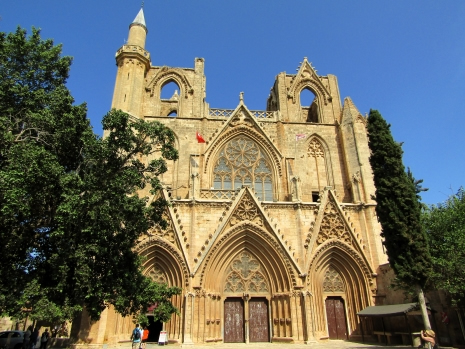 |
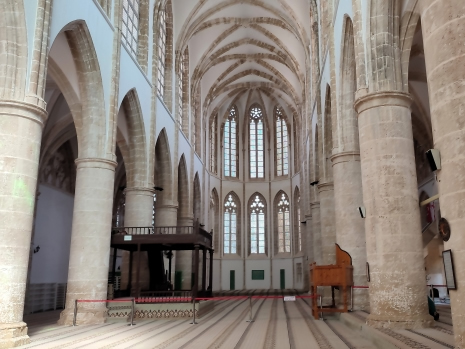 |
|
Above: Lala Mustafa Pasha Mosque
The city’s skyline is dominated by the Lala Mustafa Pasha Mosque, formerly the Gothic-style Cathedral of Saint Nicholas, illustrating the transformation of sacred spaces under Ottoman rule. Encircling it all are the massive Venetian fortifications, still largely intact, which once made Famagusta one of the most fortified cities in the Eastern Mediterranean. Today, visitors to the city centre will find walkable streets with scattered cafés, artisan shops, and ruins that evoke centuries of layered history.

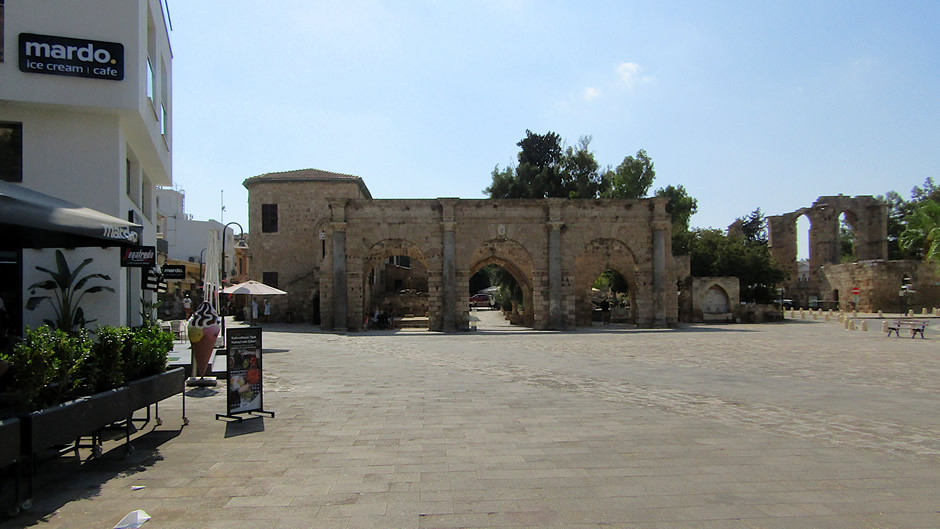
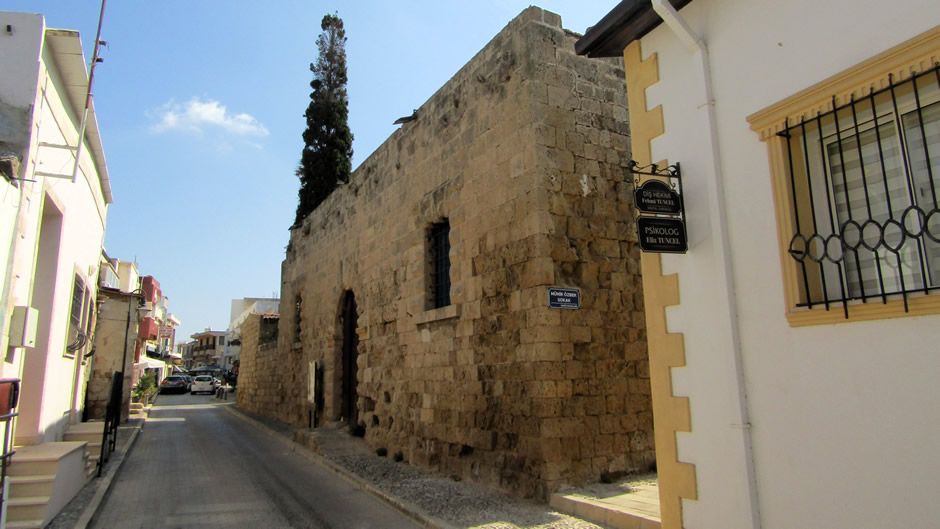
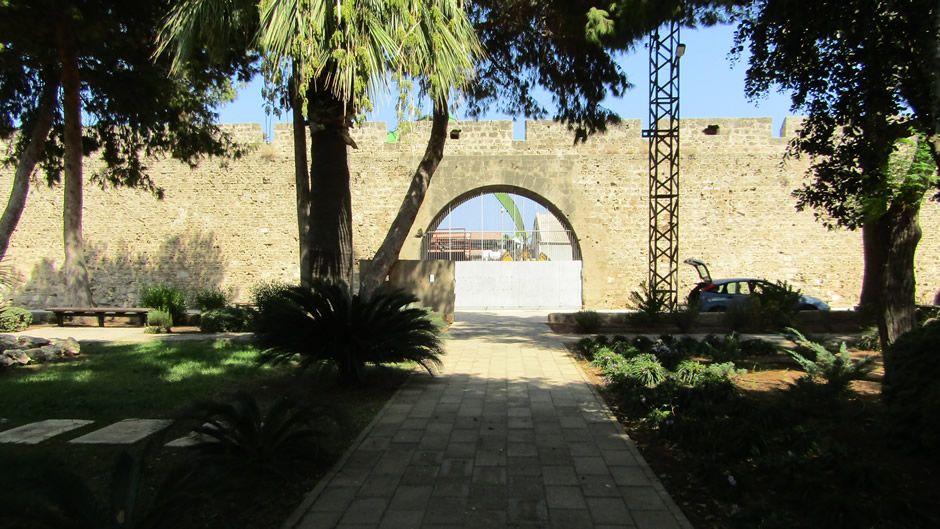
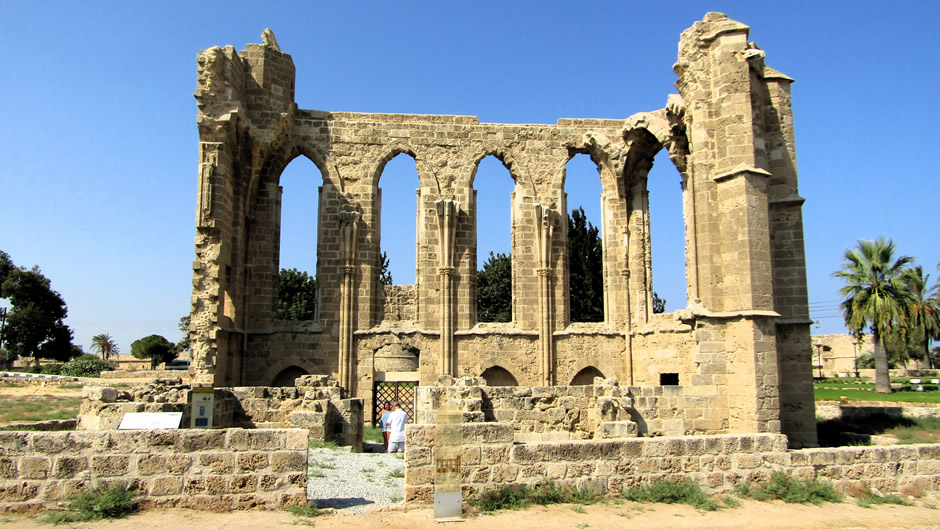
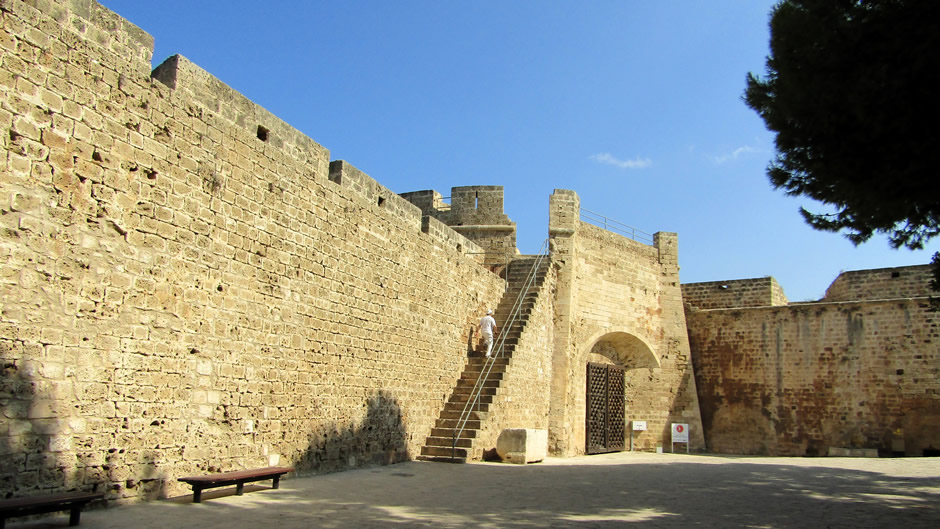
Statues and Monuments in Famaugusta
Famagusta features a mix of historical and modern statues that reflect its layered past, from ancient Roman ruins to modern national symbolism. A small selection seen on the visit follows:
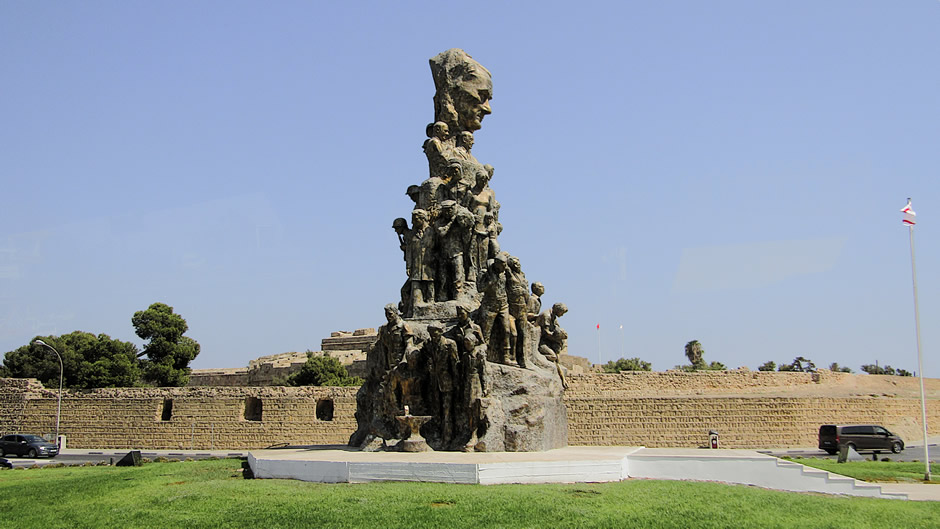
Shown above, the Atatürk Victory Monument (Zafer Anıtı) or "Gazimağusa Anıtı" (Famagusta Monument) is a landmark dedicated to the struggle and victory of Turkish Cypriots. It is located in the newer part of the city, situated on a roundabout on Atatürk Avenue, a short distance east of the old walled city centre.
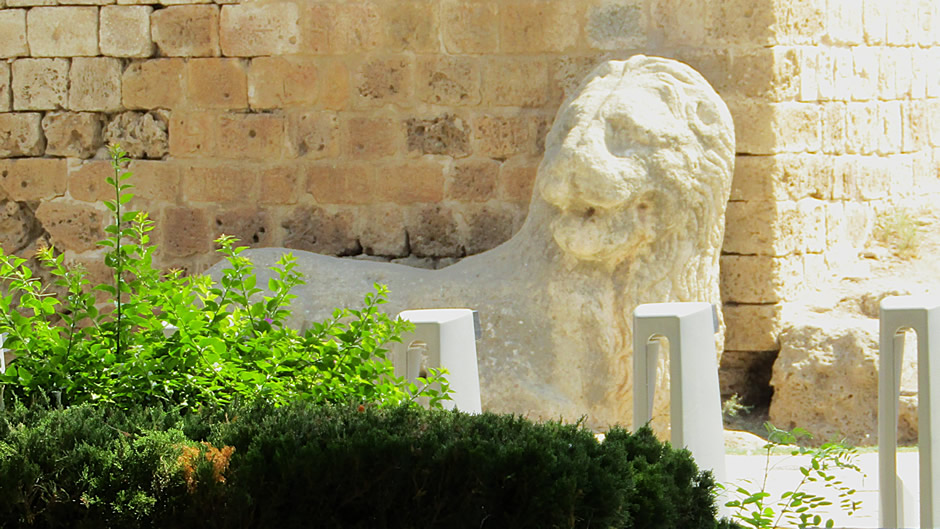
The Lion of Famagusta (above) is a Venetian-era stone lion sculpture at the entrance of the Porta del Mare (Sea Gate), symbolizing the power of the Venetian Republic. It’s one of the city’s most iconic medieval emblems.
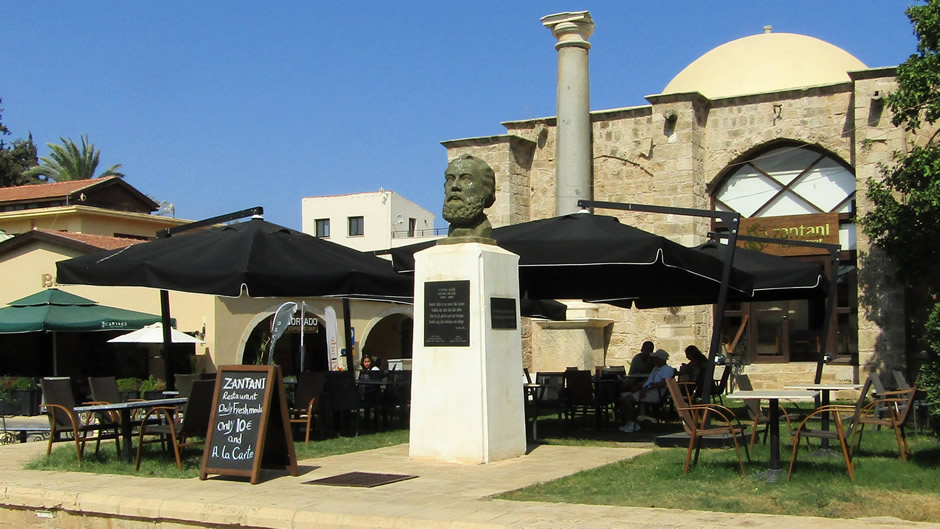
Namık Kemal’s statue in Famagusta (above) stands as a tribute to the influential Ottoman writer, poet, and reformist who was exiled to the city in 1873 for promoting nationalism and liberalism through his play Homeland or Silistra. Known as "Vatan şairi" (Patriotic Poet) and also as the “Turkish Shakespeare,” Kemal spent 38 months imprisoned in a dungeon that now serves as a museum, where he penned notable works like Gülnihal and Akif Bey. His bust faces the square named after him, symbolizing his enduring legacy and the city’s role in shaping his literary and political journey, which later inspired figures like Mustafa Kemal Atatürk.
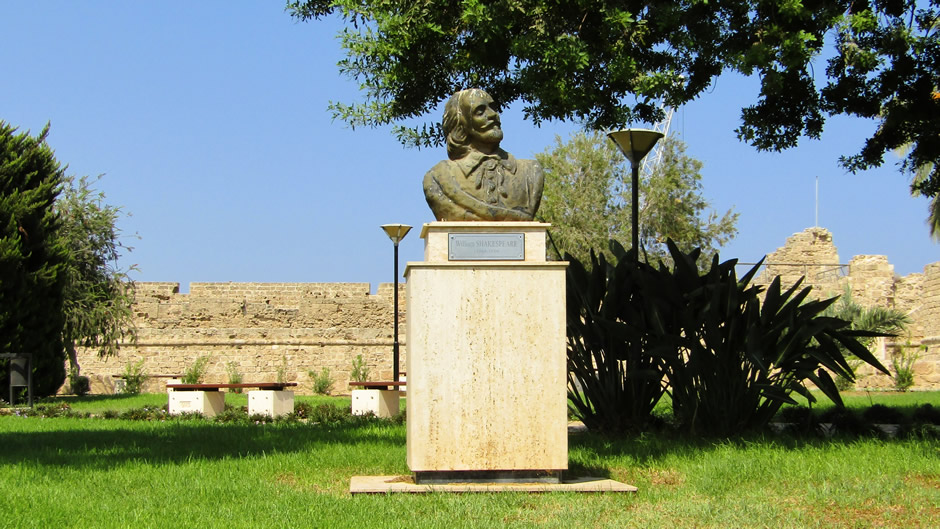
Located near Othello Castle, a bust of William Shakespeare commemorates his believed connection to Famagusta through his play Othello, which (as mentioned above) includes a "seaport in Cyprus” for a setting and widely believed to be this historic city. Positioned in a park-like area near the castle ruins, the statue honours the enduring cultural link between the playwright and the site. The bust was reportedly stolen in 2020 but soon replaced with a new one (shown above), funded by the local municipality.
Link to Next Page (Page 5 of 5)
Link to Previous Page (Page 3 of 5)
Back to Top